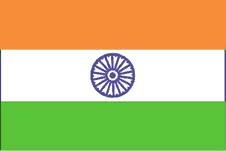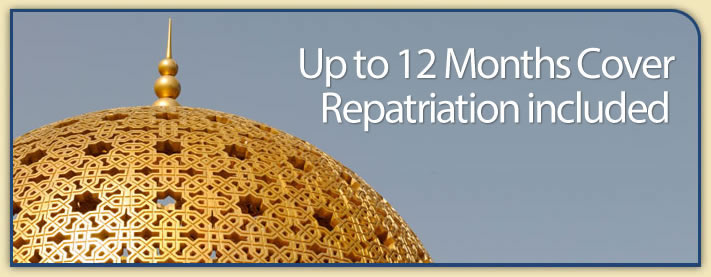Country Guide • India

India is located on the Indian sub-continent in South Asia. It is bound by Pakistan to the northwest, China, Bhutan and Nepal to the north, Myanmar and Bangladesh to the east, the Bay of Bengal to the southeast and the Arabian Sea to the southwest. It is the second largest country in Asia and is home to one sixth of the world’s population. Its territory also includes the Andaman, Nicobar and the Lakshadweep Islands.
| Official Name | Republic of India |
|---|---|
| Area | 3,166,692km² (1,222,720mile²) |
| Population | 1,048,000,000 |
| Continent | Asia |
| Population per mile² | 827 |
| Capital City | Delhi |
| Religions | 83% Hindu, 11.5% Muslim, 3% Christian, 2% Sikh, r 1% are Buddhist and 0.5% are Jain |
| Language | Hindi and English |
| Government | Federal Republic |
| Currency | Rupee |
| GDP | $2.66 trillion |
| GDP per Head | $2,540 |
| Natural Resources | Coal (fourth-largest reserves in the world), iron ore, manganese, mica, bauxite, titanium ore, chromite, natural gas, diamonds, petroleum and limestone |
| Land Use | Arable Land 54% |
| Agriculture | Rice, wheat, oilseed, cotton, jute, tea, sugarcane, potatoes; cattle, water buffalo, sheep, goats, poultry and fish |
| Industry | Textiles, chemicals, food processing, steel, transportation equipment, cement, mining, petroleum and machinery |
| Tourism | The most frequently visited part of India is the Golden Triangle—Delhi and the magnificent monuments of Agra and Jaipur. The unfairly maligned great cities of Mumbai and Kolkata (Calcutta) have a bustling, colourful charm, while the holy city of Varanasi or the temples of Tamil Nadu are well worth visiting. The palm-fringed beaches of Goa have a European charm all of their own. The vastness of this country will engulf you though. The British and Foreign Commonwealth office strongly advise against travel to Jammu and Kashmir, with the exception of Ladakh via Manali or by air to Leh. We advise against all travel in the immediate vicinity of the border with Pakistan and the Line of Control (with the exception of Amritsar and Jaisalmer). |
| Natural Hazards | Droughts; flash floods, widespread and destructive flooding from monsoonal rains; severe thunderstorms; earthquakes |
| Health Risks | Cholera, dengue fever, dysentery, hepatitis, malaria, meningitis (trekking areas only) and typhoid |
| Climate | India has a tropical climate that is dominated by the Asiatic monsoons with four distinct seasons which are common to all six or seven climatic regions. (1.) A relatively cool winter monsoon season. (2.) A hot and rainless transitional season. (3.) A rainy monsoon season and (4.) a humid season. Tropical hurricanes and cyclones are common between April to June and September to December. Average temperature ranges in New Delhi are from 7 to 21°C in January to 26 to 41°C in May |
| Time | GMT/UTC+5 1/2 hours |
| National Days | January 26 |
| Visas | You must obtain a visa before travelling to India. Visas cannot be obtained on arrival. Foreign nationals arriving in India on long term multiple visas are required to register with the nearest Foreigners Regional Registration Officer within 14 days of arrival. Over-stayers will be fined and may be prosecuted |
| British Embassy | Embassy Details |
Information Only
The content above is for information purposes only and we have tried to ensure that the information is as accurate as possible. We cannot accept any responsibility for any inconvenience, loss or injury as a result of the information above. You should always check and verify any critical information like visas, health and safety and customs with the relevant authorities before you travel since information can change at any time.



